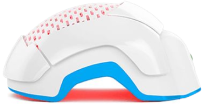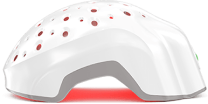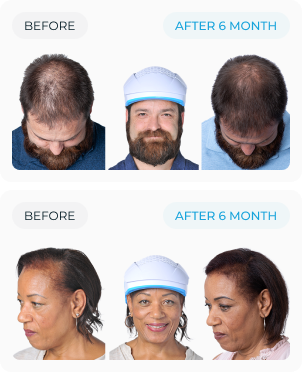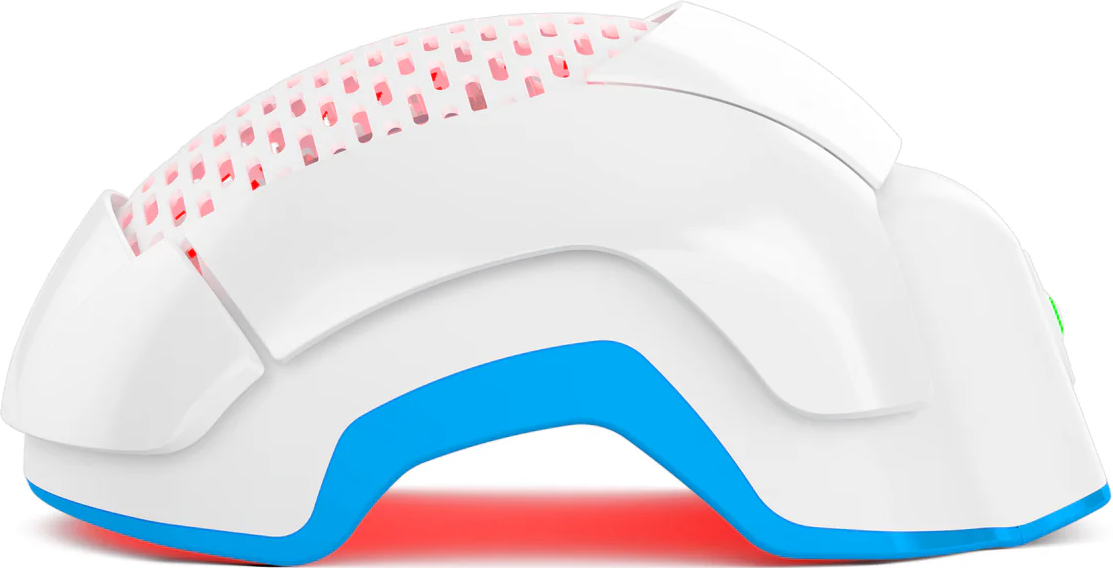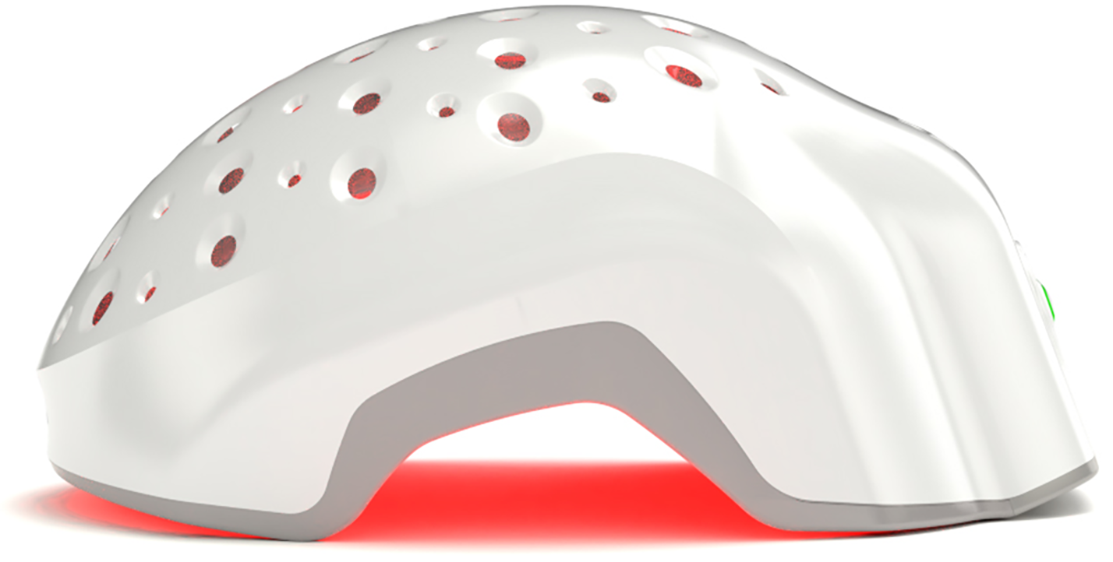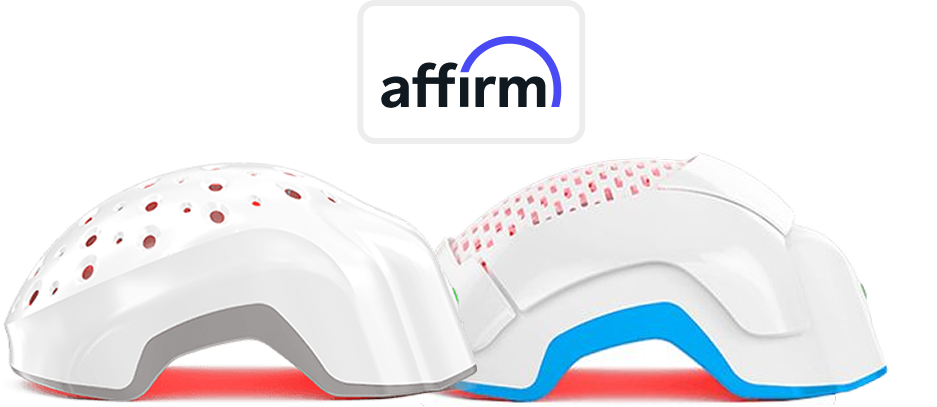Do your hair strands feel dry, brittle, or just plain lifeless? It's due to a lack of moisture. Your scalp has oil glands (sebaceous glands) that naturally keep your hair hydrated and nourished by producing sebum, the natural oil that travels down your strands. But sometimes, your sebaceous glands can be underactive, and this natural process of hydrating your hair can be ineffective, leading to dull, frizzy hair and breakage. It could be because of genetics, age, hair porosity, hair texture, length or things like heat styling, chemical treatments, weather, overwashing, or using harsh shampoos.
Just applying conditioner isn’t always enough. To truly fix dry hair, you need to know why it’s dry in the first place. Once you know the cause, you can use the right products and habits to restore moisture, softness, and shine.
In this article, we’ll break down common causes of dry hair, how to tell if your hair lacks moisture, and simple ways to deeply hydrate your hair at home. Let’s get started and give your hair the hydration it truly needs.
What Are The Causes of Dry Hair?
If your hair feels dry, frizzy, or brittle, there’s usually a reason behind it. Understanding what’s causing the dryness is the first step to fixing it. Here are some of the most common reasons why hair loses moisture:
1. Lack of Natural Oils
Your scalp makes natural oils (sebum) to keep your hair soft and hydrated. If your scalp doesn’t produce enough oil, or the oil doesn’t spread down your hair strands, it can become dry. This is common in curly, coily, or long hair types.
2. Washing Too Often
Shampooing your hair too much can strip away those natural oils. While it’s important to keep your scalp clean, overwashing, especially with sulfate shampoos, can leave your hair dry and rough.
3. Heat Styling
Using flat irons, curling wands, or blow dryers too often can damage your hair cuticle. This outer layer protects moisture, so once it’s broken, water escapes, and your hair becomes dry and brittle.
4. Chemical Treatments
Frequent use of hair dyes, bleach, relaxers, or perms can weaken your hair structure. These treatments change the inner bonds of your hair, making it harder for strands to hold on to moisture.
5. Environmental Factors
Your hair reacts to the weather just like your skin does. Exposure to sun, wind, cold, or dry air can suck the moisture right out of your hair. Even hard water or chlorine from swimming pools can cause dryness.
6. Ageing
As we age, our scalp produces less oil. This can naturally lead to dryer hair, especially after menopause or during hormonal changes.
7. Poor Diet or Dehydration
Your hair needs nutrients like protein, vitamin E, omega-3 fatty acids, and water to stay healthy. If your diet lacks these or you’re not drinking enough fluids, your hair might show signs of dryness.
8. Wrong Hair Products
Using harsh or wrong products for your hair type can lead to more damage. Products with alcohol, sulfates, or strong fragrances can dry out your scalp and strands.
How to Moisturize Dry Hair?
Adding moisture to dry hair means protecting it from things that dry it out, adjusting your hair care habits, and using products that keep it healthy and hydrated. Here are 8 simple tips you can follow at home to keep your dry hair moisturized.

1. Natural Hair Styling
Using heat tools like flat irons, blow dryers, or curling wands is one of the main reasons hair becomes dry and damaged. These tools strip away moisture by exposing your hair to high temperatures.
To keep your hair healthy:
- Limit heat styling whenever you can and try new, no-heat hairstyles.
- If you need to use heat tools, always apply a heat protectant before styling. This creates a barrier that helps lock in moisture and prevents breakage.
- Focus on moisturizing your hair regularly to prevent dryness caused by heat damage.
2. Hair Moisturizers
Hair moisturizers can be the key to soft, healthy hair. But not every product labeled “moisturizing” actually works. Many moisturizing products just coat your hair instead of hydrating it.
Here’s what to look for:
- Go for water-based formulas. Real hydration starts with water as the first ingredient.
- Choose products with moisture-attracting ingredients like: Glycerin, Aloe vera, Hyaluronic acid, and Panthenol.
- Look for natural oils and emollients like Shea butter and Jojoba oil which help seal in the moisture and keep your hair soft.
What to avoid:
Stay away from products loaded with:
- Silicones
- Drying alcohols
- Heavy waxes
These may make hair feel smooth at first but can cause buildup and dryness over time. If your hair feels greasy but still dry, the product might just be sitting on top without actually moisturizing.
3. Leave-In Conditioners
Leave-in conditioners provide an extra layer of hydration, prevent tangles, and protect your hair against environmental damage. If your hair gets dry throughout the day, a lightweight, water-based leave-in can keep it refreshed without making it greasy.
Look for leave-in conditioners with ingredients like aloe, rose water, and silk amino acids for maximum hydration without buildup.
Pick the right one for your hair type:
-
For dry or curly hair: Use cream-based leave-in conditioners for deeper moisture.
-
For fine or straight hair: Use lightweight leave-in sprays that won’t weigh your hair down.
Pro tip: Apply your leave-in conditioner to damp hair. This helps it absorb better and keeps your strands hydrated longer.
4. Hydrating Shampoos
Not all shampoos are the same. Some shampoos strip natural oils, leaving hair drier than before you washed it. The right hydrating shampoos for dry hair contain gentle, sulfate-free cleansers that remove buildup without sucking out moisture.
Always look for hydrating shampoos with:
- Coconut-based surfactants (gentle cleansing without stripping)
- Hydrating botanicals like aloe, rose water, and marshmallow root
- Protein-moisture balance (especially for high-porosity hair or chemically treated hair)
If your shampoo leaves your scalp squeaky clean, it’s probably too harsh. Hydration starts at the cleansing stage, so swapping out drying formulas for moisture-rich alternatives can make all the difference.
5. Hair Oils
Oils don’t add moisture to your hair. Instead, they seal it in. Applying oil to dry hair without water or a leave-in conditioner is useless. That said, some oils work better than others at sealing moisture inside the hair shaft:
-
Coconut Oil – Penetrates deep, great for pre-wash hydration.
-
Argan Oil – Lightweight, prevents frizz without buildup.
-
Jojoba Oil – Closest to natural scalp oils, great for sealing hydration.
-
Castor Oil – Thick and heavy, ideal for locking in moisture on coily hair.
Always apply oils after moisturizing with water-based products to lock in hydration instead of just coating dry strands.
6. Natural Hair Hydration Methods
There are plenty of natural hair hydration methods that don’t involve drenching your scalp in chemicals. Some of them are:
-
Aloe Vera Rinse: Aloe is packed with hydration-boosting enzymes that help retain moisture. Mix it with water and apply it as a leave-in treatment for a hydration boost.
-
Rice Water Soak: Rich in amino acids and vitamins, rice water strengthens hair while increasing moisture retention.
-
Flaxseed Gel: Flaxseed is a lightweight, natural humectant that keeps curls hydrated without weighing them down.
- Herbal Teas: Chamomile, hibiscus, and green tea work wonders for moisturizing and soothing the scalp.
Natural remedies can be highly effective, but the key is consistency. If your hair is seriously parched, pairing DIY treatments with professionally formulated hydrating products will give you the best results.
7. Hair Hydration Masks
If your hair feels dry along with brittleness and breakage, it can be worth adding a hair mask to your weekly hair care routine. Hair masks deeply condition your hair and help repair damage. You can use hair masks with ingredients like avocado oil and reparative proteins. You can also make a DIY hair mask at home:
-
Avocado & Honey Mask – Deeply nourishes with fatty acids and humectants.
-
Coconut Milk & Banana Blend – Rich in vitamins and helps soften dry, brittle hair.
-
Yogurt & Olive Oil Treatment – Restores elasticity while hydrating thirsty strands.
-
Shea Butter & Aloe Gel Mix – Seals moisture into curls and prevents breakage.
Apply once a week for a hydration surge, especially if you regularly use heat or color treatments.
8. Avoid Overwashing
Washing your scalp too often can strip away its natural oils, making your hair dry. Try not to wash your hair more than needed. Also, use cold or lukewarm water instead of hot water to help keep your hair hydrated.
An Effective Hair Care Routine to Hydrate Your Hair Naturally At Home
1. Pre-shampoo oiling
Apply a small amount of oil (like coconut, argan, or jojoba) to the lengths before shampooing. It creates a protective barrier, preventing shampoo from stripping away natural oils. This method also helps keep the hair soft and reduces breakage or dryness after washing.
2. Shampooing only the scalp
Focus shampooing on the scalp (not the lengths). It helps cleanse away oil, dirt, and product buildup without drying out the rest of your hair. Letting the suds run down the hair is enough to clean the lengths gently without over-stripping them.
3. Emulsifying shampoo in your hands
Mix shampoo with a little water in your palms before applying it to your scalp. It spreads the shampoo more evenly and lathers gently, which is kinder to both the scalp and hair.
4. Following with conditioner
Use lightweight conditioner to restore moisture, add slip, and smooth the cuticle after cleansing. You’re sealing in hydration, reducing frizz, and improving manageability by using conditioners.
Bonus Tips:
- Use a sulfate-free shampoo to keep your routine even gentler.
- For very dry hair, consider deep conditioning once a week.
- Use lukewarm water instead of hot to help retain moisture.
How to Keep Curly Hair Moisturized?
Curly hair tends to lose moisture faster than straight hair, which means it requires more hydration. However, overloading on creams and butters can lead to buildup that suffocates the hair rather than hydrating it.
Instead, you can try:
- The LOC method (Liquid, Oil, Cream) for long-lasting hydration.
- Using lightweight, water-based moisturizers and conditioners
-
Finger detangling to prevent breakage.
Layering on products does not help you in curly hair hydration, but using the right combination of water, humectants, and sealants keeps your hair strands moisturized and healthy.
How to Keep Your Hair Moisturized at Night?
Your nighttime hair hydration routine matters just as much as what you do during the day. Hair loses moisture while you sleep, especially if you’re tossing and turning against cotton pillowcases.
To keep hydration locked in overnight:
- Use a satin or silk bonnet/scarf to prevent moisture loss.
- Apply a lightweight leave-in conditioner before bed.
- Braid or twist hair loosely to reduce friction and retain moisture.
These small tweaks can keep your hair hydrated and frizz-free, making styling easier in the morning.
Conclusion
Moisturizing your hair isn’t complicated, but it does require consistency and the right techniques. From using gentle, hydrating shampoos to deep conditioning and sealing in moisture with oils, every step plays a role in keeping your strands healthy, soft, and strong. Avoiding excessive heat and chemical treatments while nourishing your body with proper hydration and nutrients will set your hair up for long-term moisture retention. So, if your hair has been feeling more like straw than silk, now you know exactly how to turn things around—hydration is the key.


